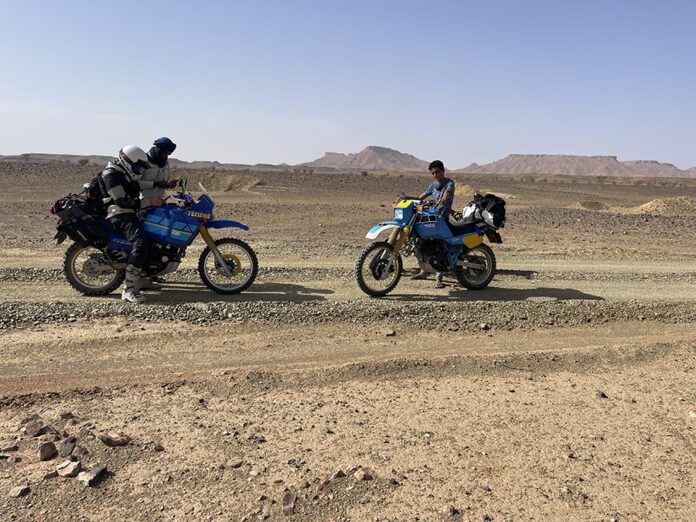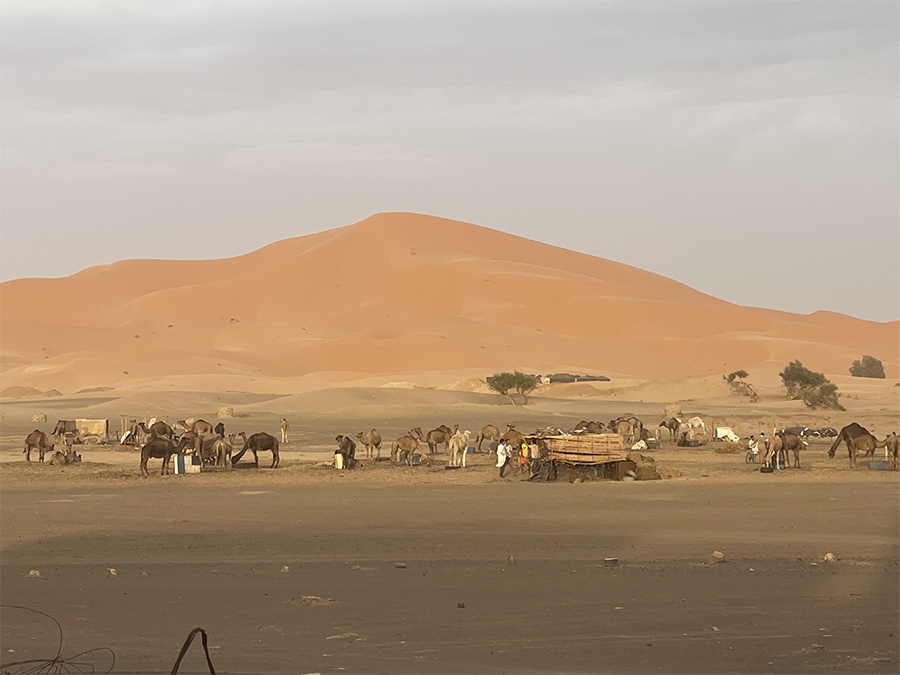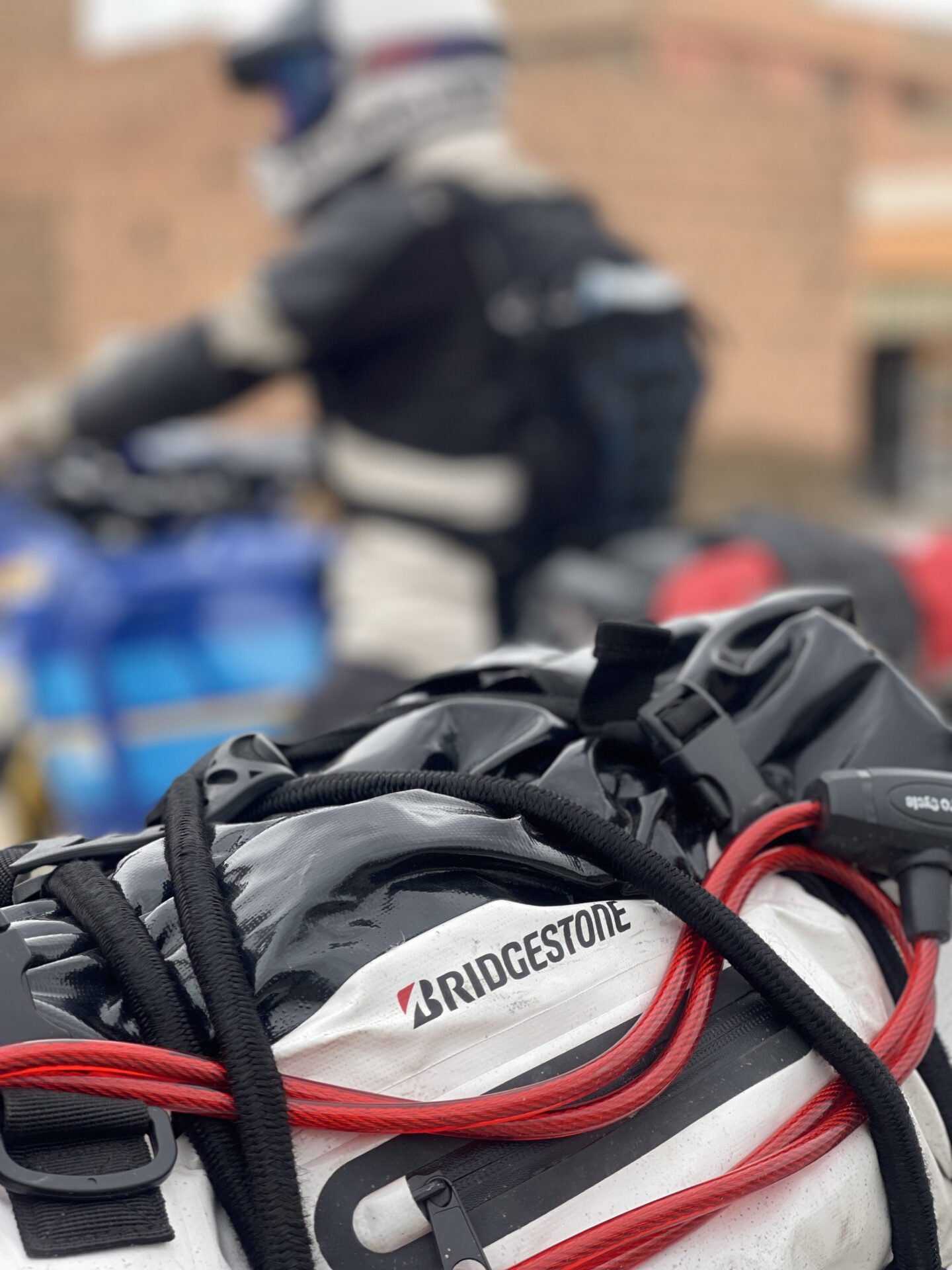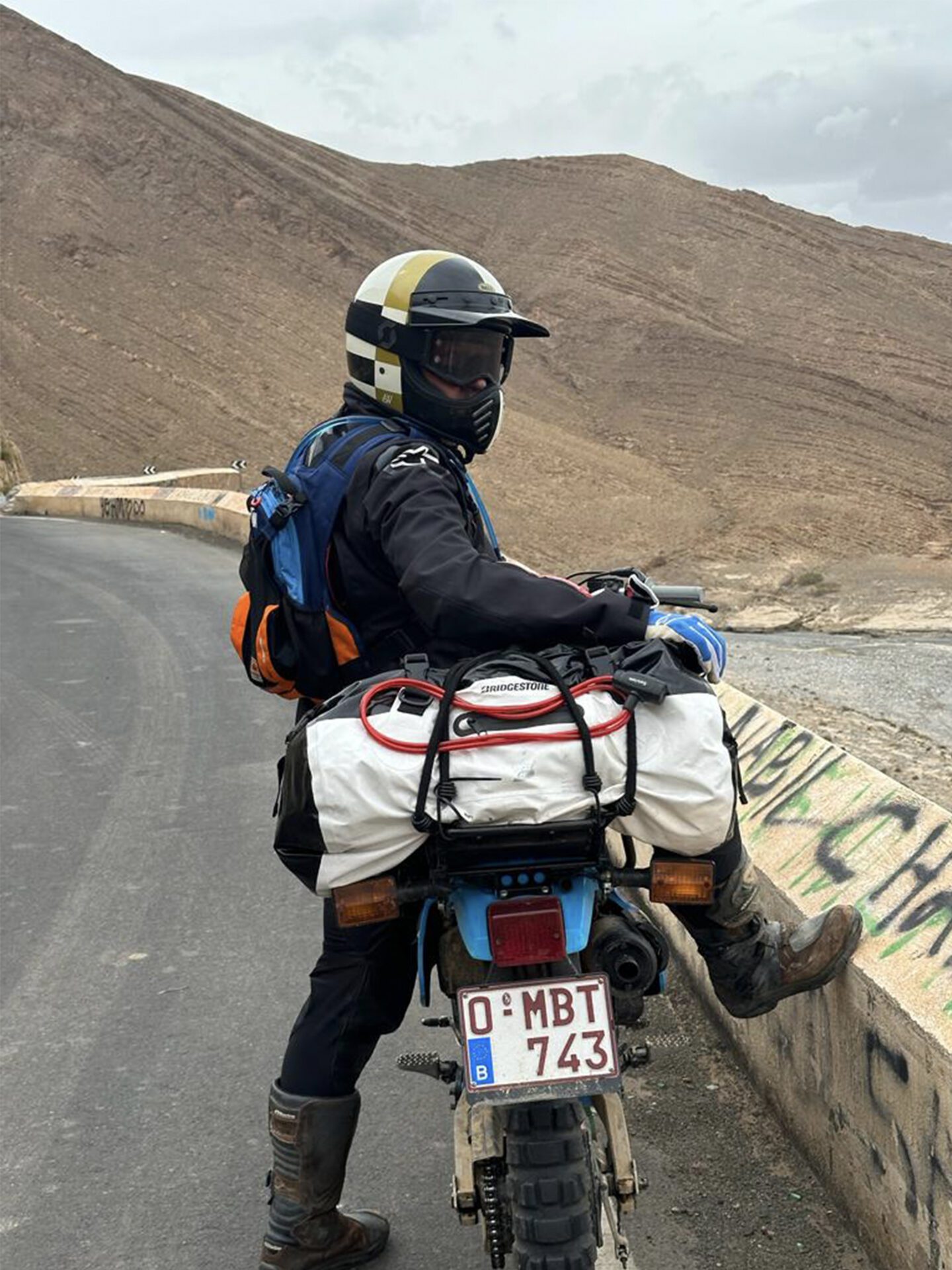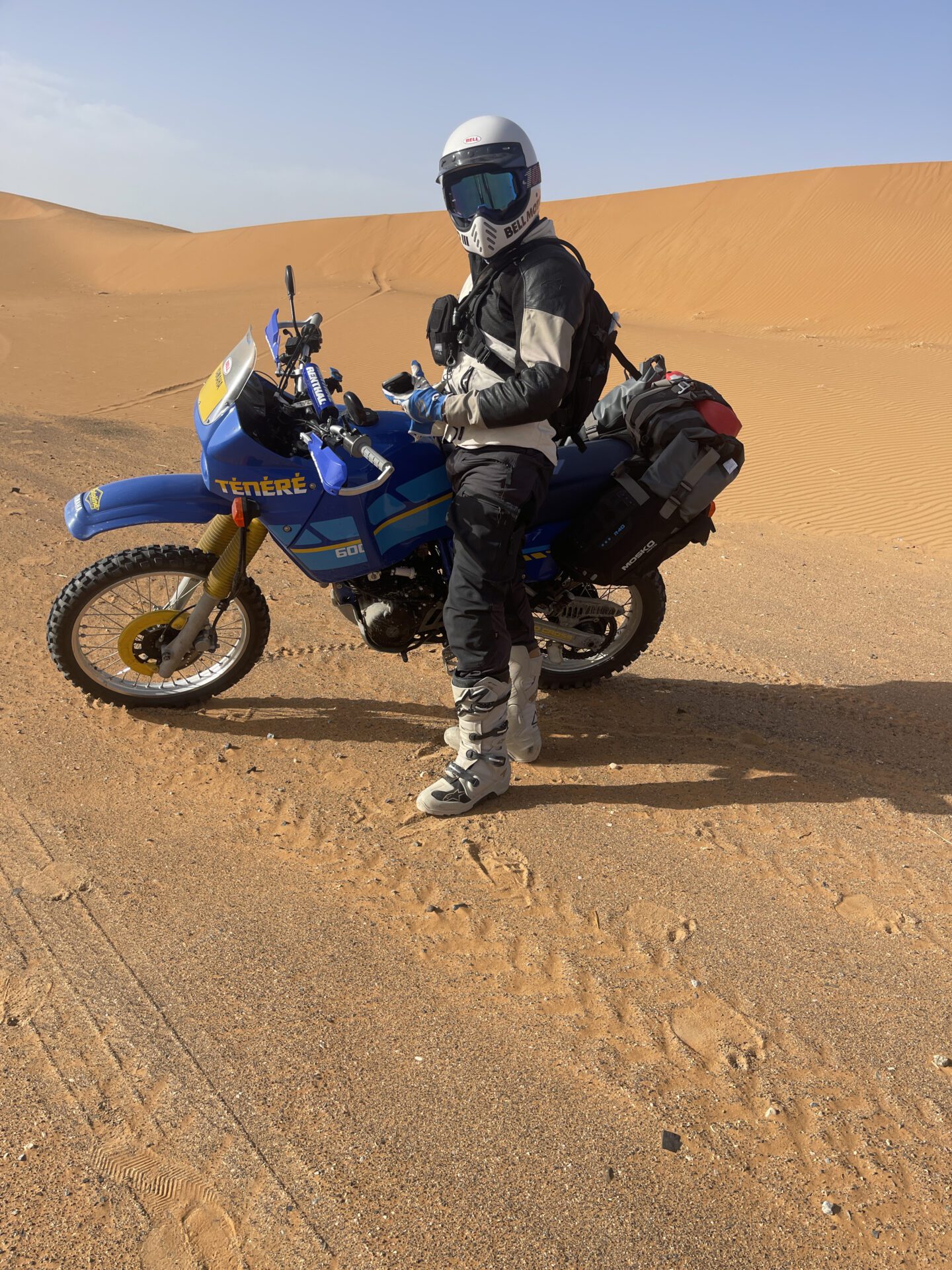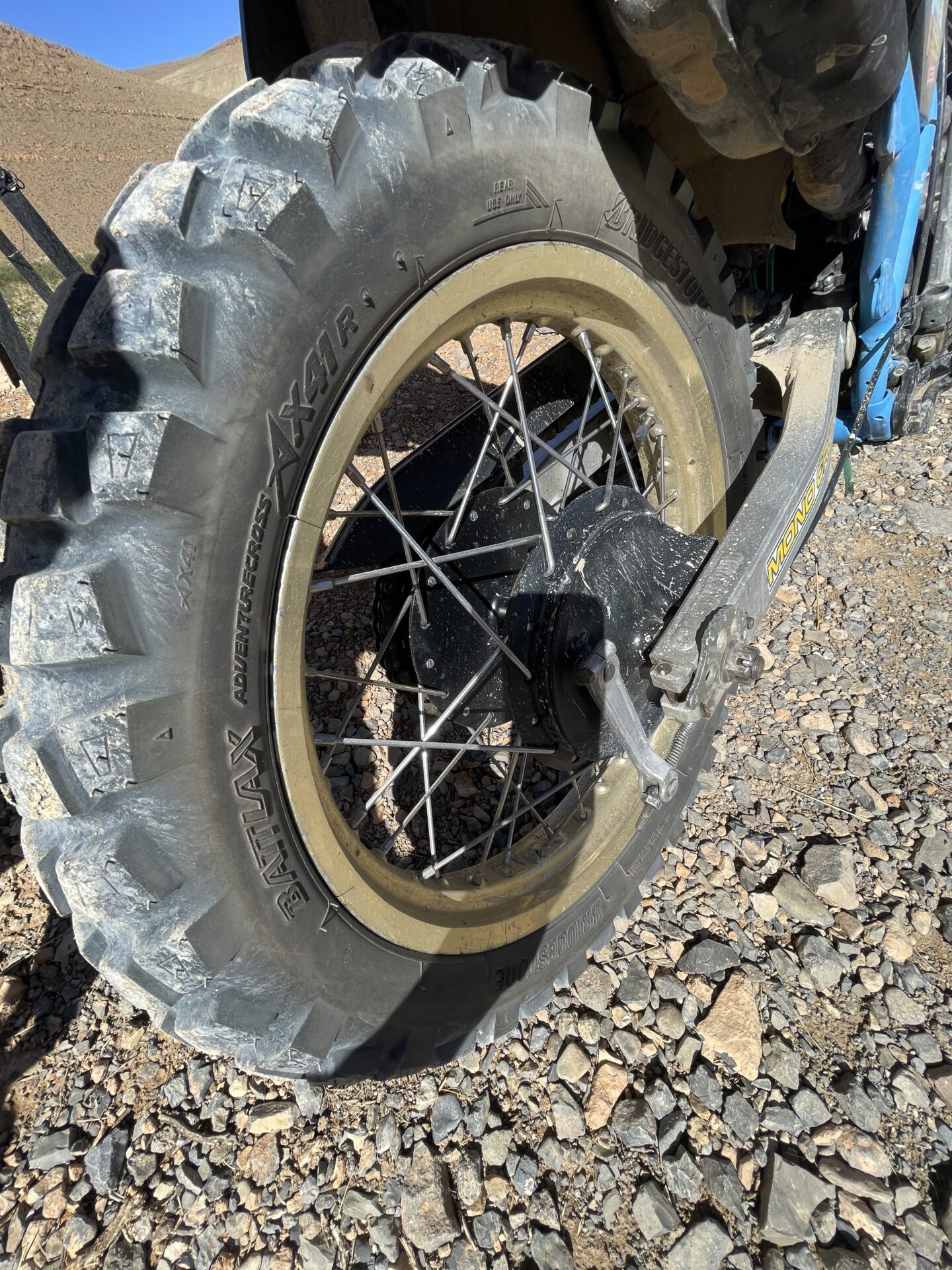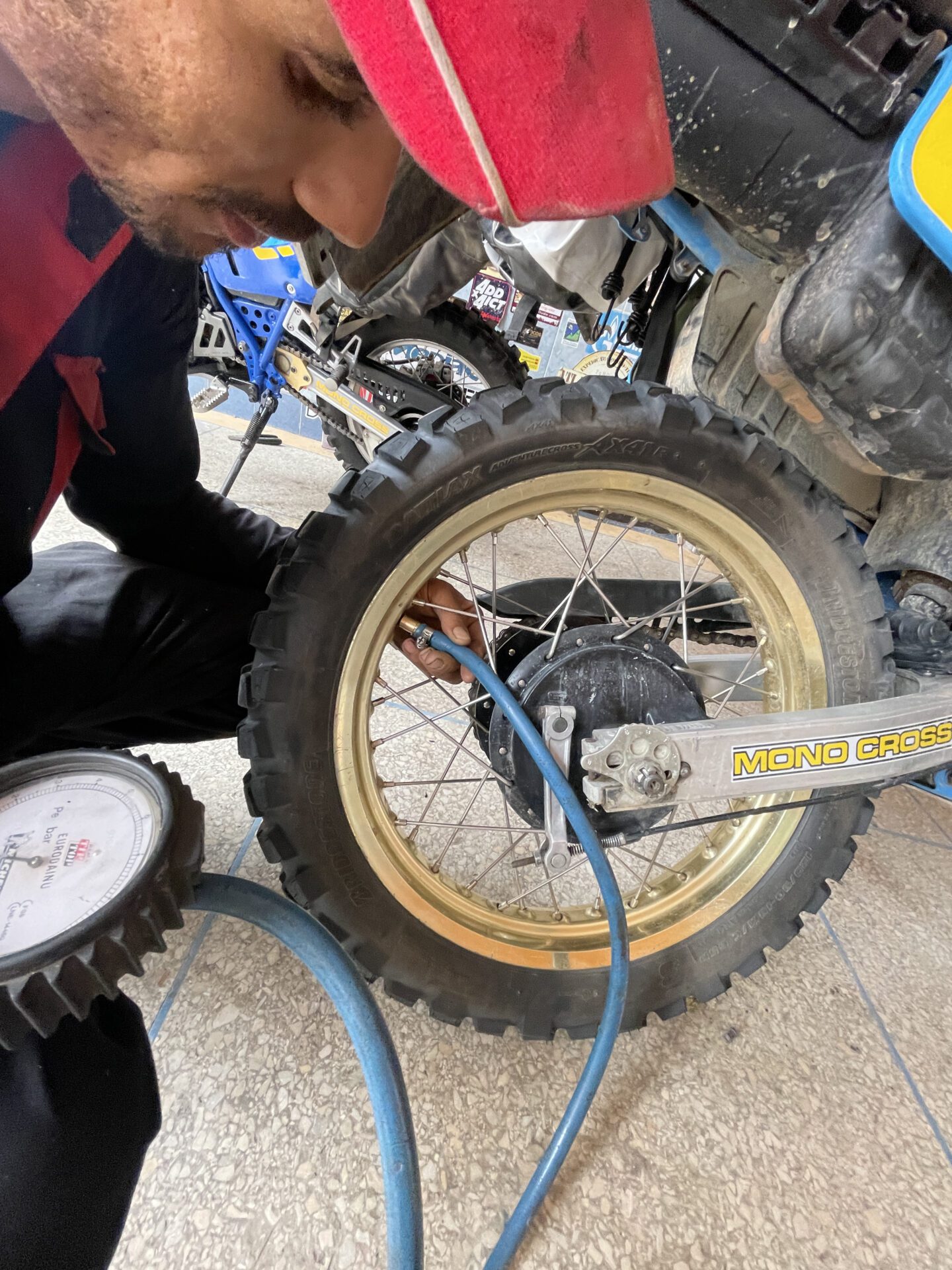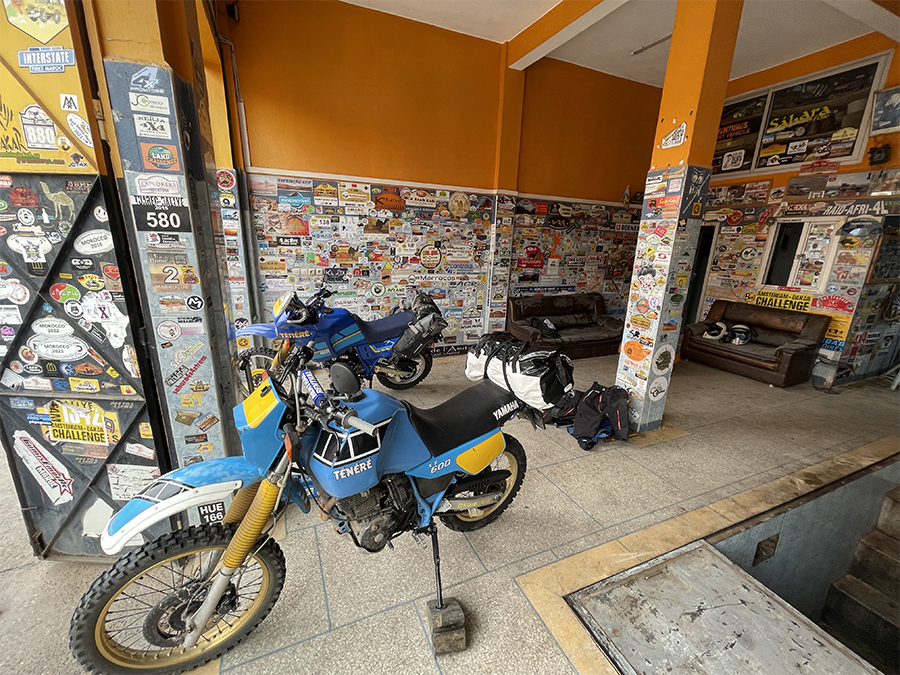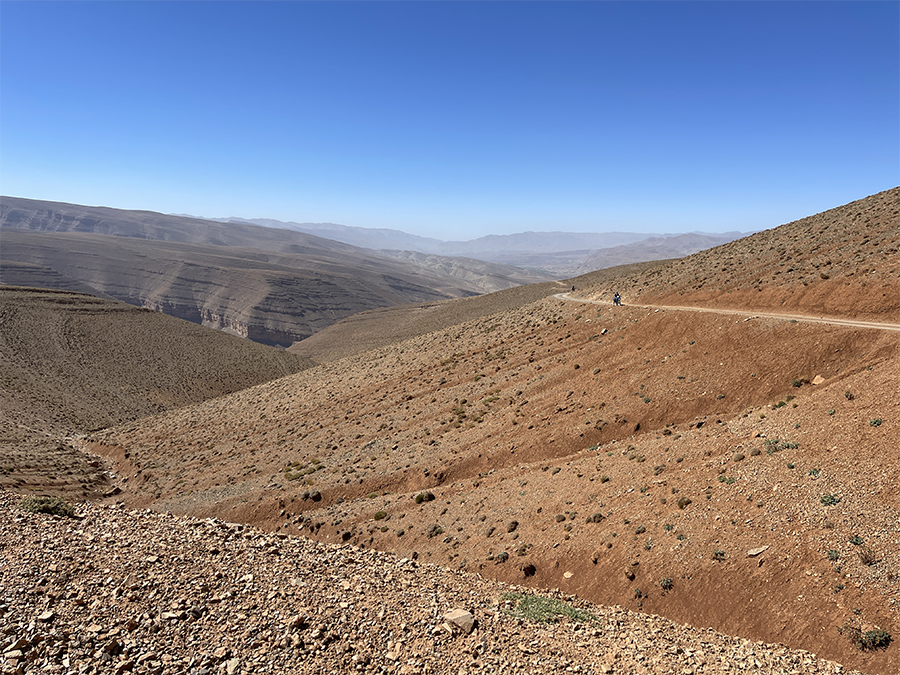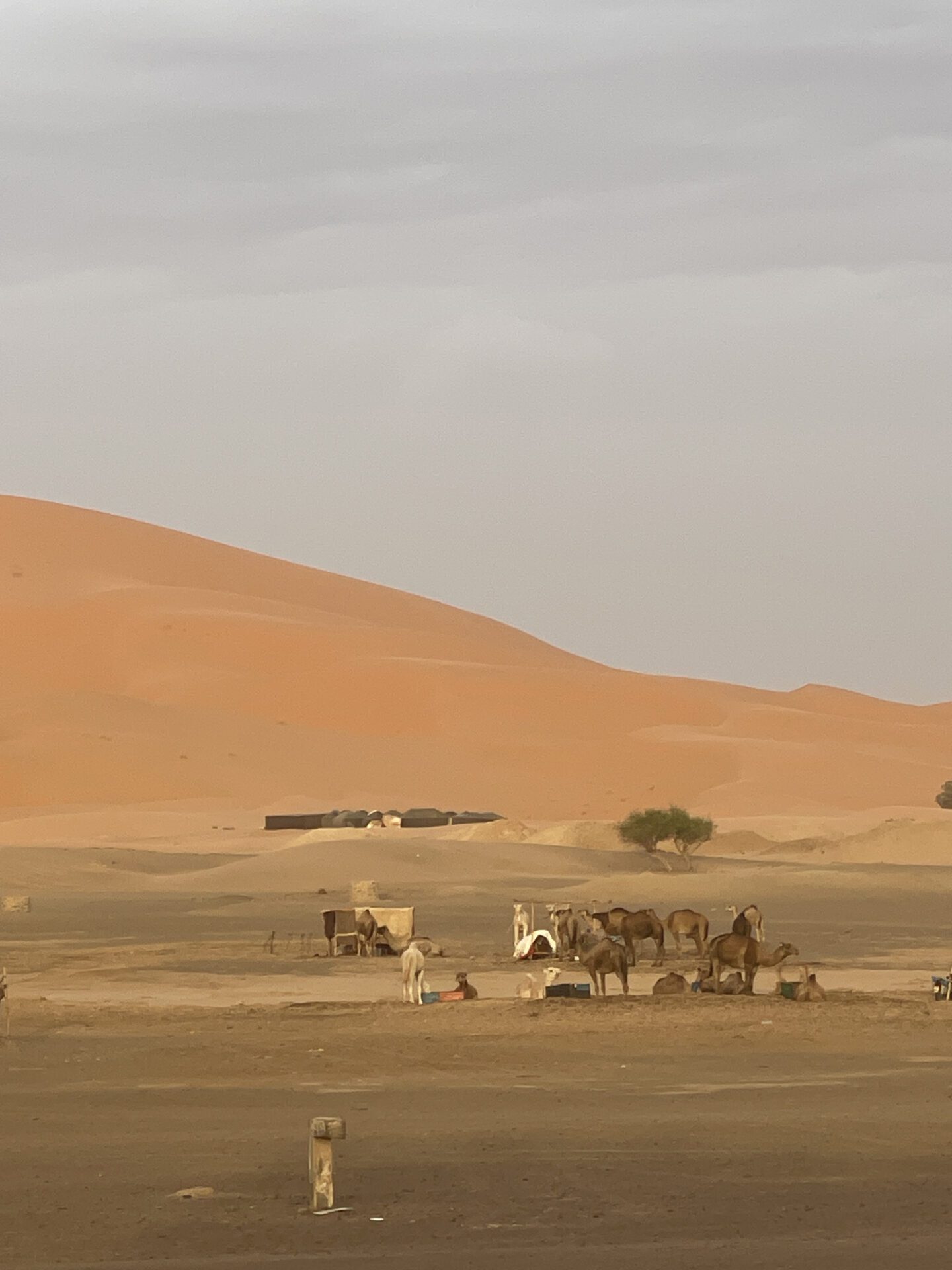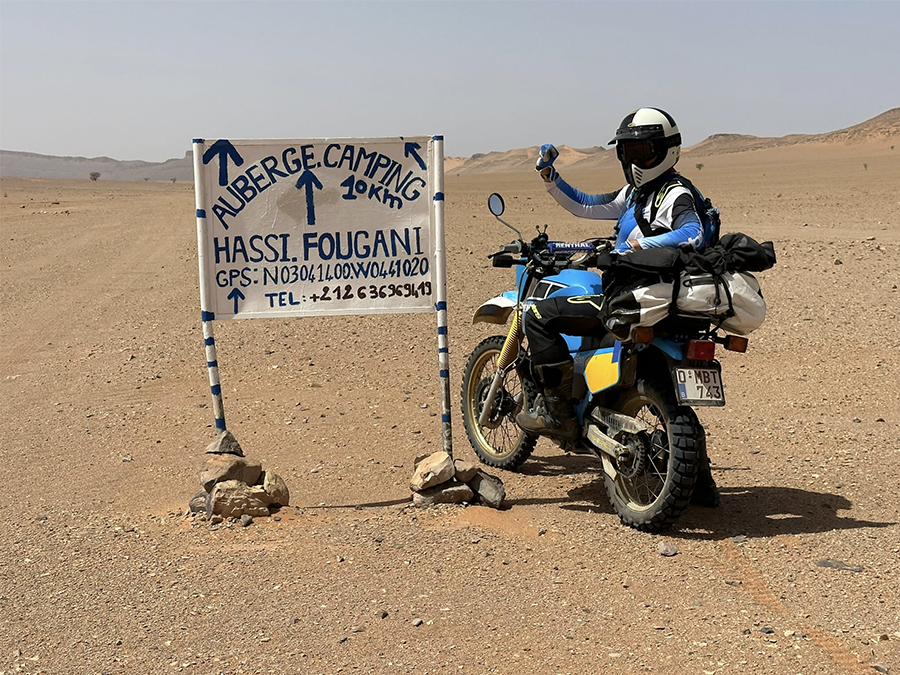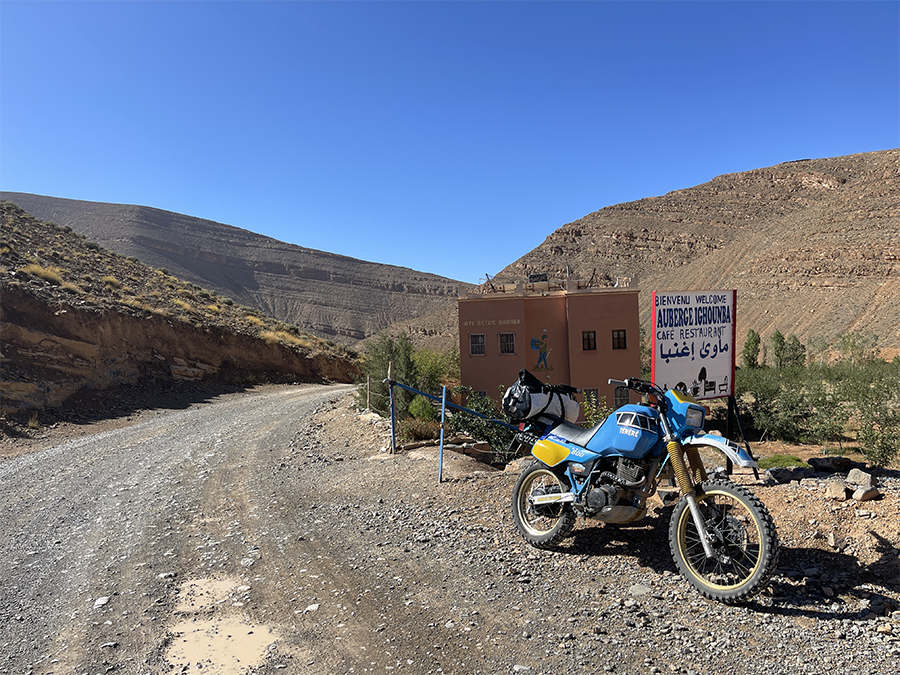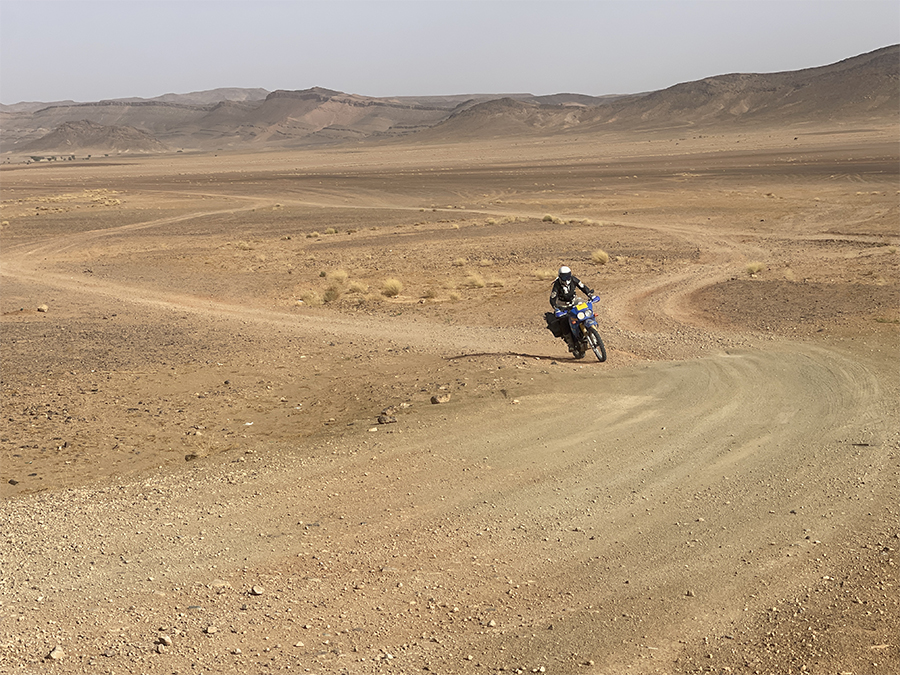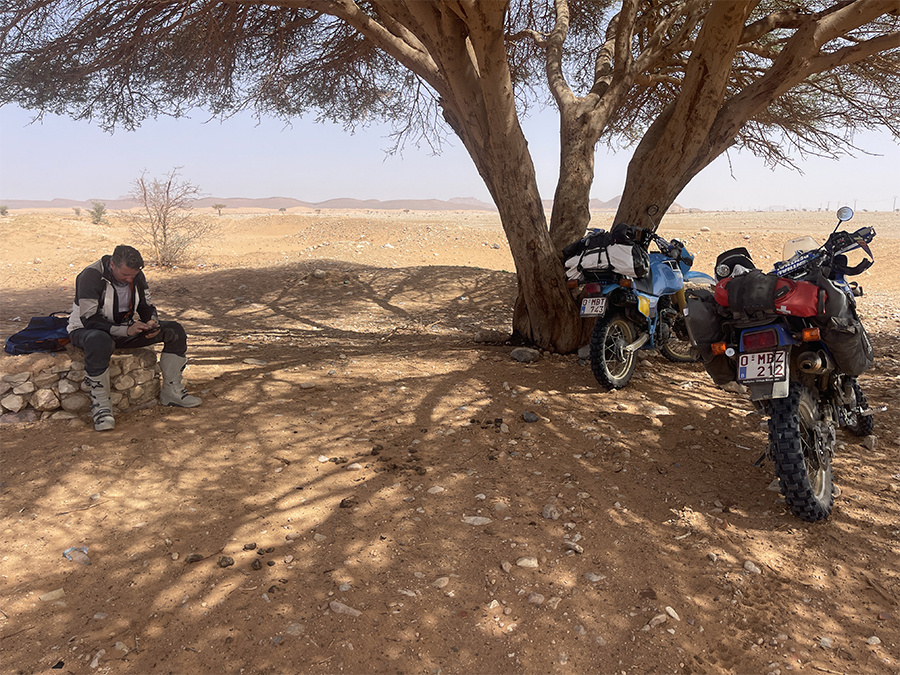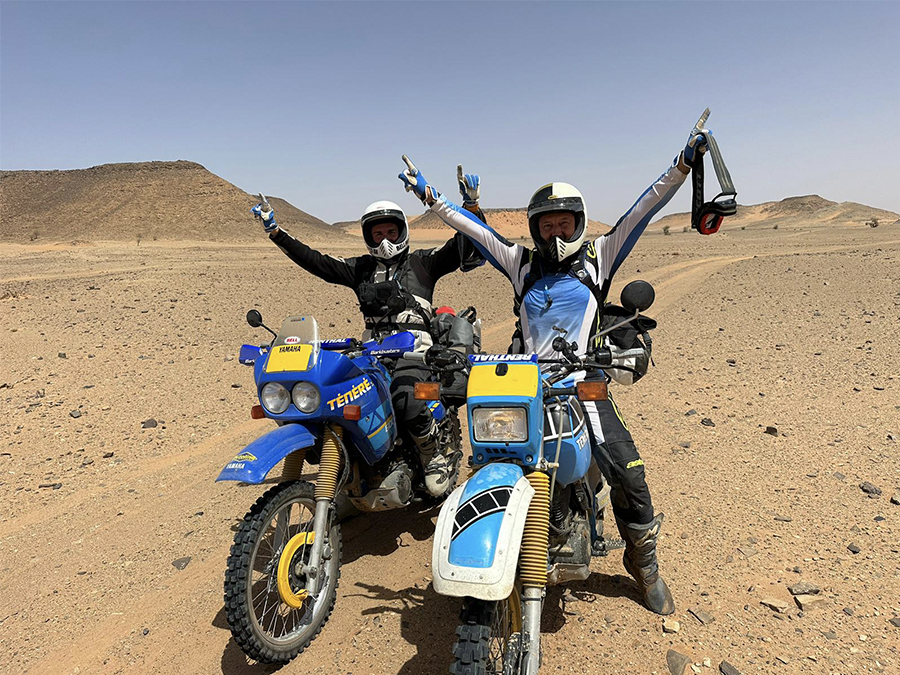Classic desert adventure
Old school is cool. Or so they say. But is that really the case? Or does it just sound good? We put this saying to the test and traveled to Morocco with two Yamaha XT600 Ténérés from the eighties. Goal? To explore the most evocative trail of the Sahara and travel in the footsteps of the original Dakar raid.
Travel light
To evoke and respect the atmosphere of times gone by as much as possible, we decided to embark on the adventure without an assistance car or a photographer. Just two old guys on old motorcycles crossing Morocco in the footsteps of the legendary Thierry Sabine. So, no photo team to capture the adventure, let alone a video crew or drones. If there is one thing, they are allergic to in Morocco, it is a drone.
The Top Gear team once had to give up all cameras and images because they were filming with a drone without permission. Now, in the eighties there were fewer drones than pork ribs in a halal restaurant, so it didn’t even occur to us to start shooting aerial images. Two smartphones had to be enough to illustrate the vintage adventure. With only a Bridgestone saddle bag and a backpack to carry clothes and the necessary tools for a 10-day trip through the south of Morocco, there was simply no room for big photo material. All pictures to illustrate this adventure, were taken with the riders’ smartphones.
We travelled light.
XT’s
With respect to the vintage spirit of the trip, we kept both bikes in original shape. But of course, we did change the tyres. The 1984 XT 600 got a Bridgestone AX 41 rear tyre and a Battlecross E5 front. The 1988 XT600 Ténéré got a full set of Enduro tyres. The full enduro set up initially wasn’t the best choice riding on the asphalt roads of northen Morocco. But neither was it a big problem. And we had other concerns besides the tyre choices. Even though the engines were thoroughly prepared, with motorcycles nearly 40 years old, there’s never a guarantee.
Bad start
This became apparent as soon as we arrived in Almeria in good spirits ready to take the ferry to Nador. First the side stand of the ’84 bike broke off, a little later the (new) battery of the ’87 broke down. The XT didn’t show any sign of life. Reason enough not to get on the boat but to look for a solution to the problem on Spanish soil. It came in the form of a new battery – which would continue to cause problems for the next 10 days. Nevertheless, it was the best option to try and fix the problem on European soil. Not too many spare parts available once you’re in Africa…
Catching up
We rolled off the ferry in Nador a day later than planned. To maintain the original schedule, we decided to go for a quicker route with a little more asphalt and an ambitious plan: ride to the foot of the Atlas Mountains in only two days.
Just like things sometimes went wrong in the eighties, our old school bikes did not always run as they should in 2023. A mysterious carburation bug that caused the ’84 XT 600 Ténéré 34L to sputter when there was too much wind brought down the top speed. Maintaining a cruising speed of 90 kph was feasible, faster was impossible. The oldest of the XT’s was (and is) equipped with a kickstarter. Even though kicking a heavy mono is often a cause for irritation, in this area everything worked like a charm. The XT pretty much always started at the first kick. The electric starter of the 1987 XT 600 Ténéré continued to cause more headaches. A problem with the alternator meant that the battery rarely charged sufficiently. And because Yamaha in all hubris scrapped the kickstarter from this model, an external battery occasionally came into play.
No risks
Even though we tried very hard, we couldn’t make up for the lost time. Heavy rain during the weeks before we arrived changed the landscape. The ‘oueds’ (dry or shallow riverbeds) were flooded. Roads that passed through them, weren’t even visible anymore. We were forced to turn around several times and take the long way around. Taking a chance and trying to cross the swirling rivers, was never an option. Because in Europe, a small problem is never anything more than that: a small problem. Travelling through Africa there are no such things as small problems. Every hiccup can turn into a catastrophe.
Golden Dunes
Nevertheless, we reached the Atlas Mountains on day three and arrived in Merzouga a day later without any problems. At the edge of the Erg Chebbi dunes, also known as “Les dunes d’or,” the real adventure began. This is where legendary Dakar stages were ridden, this is where the legend of the Dakar was born and where traces of heroism can still be found on every dune.
Lost
One of the hallmarks of adventure is that it is only fun in retrospect. In the moment itself, problems and dangers – that are part of that adventure – are never fun. For example, it was anything but enjoyable that after some wrong guidance tips from local guides who were after money, we got lost in the desert between Merzouga and Zagora. But after some searching and yes, the occasional moments of panic, we did get back on the right track. With a temperature of over 45 degrees and endless plains surrounding you, it is easy to panic when the correct route suddenly seems to have disappeared. But in the end, even if they had some flaws, the old bikes proved to be extremely reliable. A few hours later, while enjoying a delicious tagine in the middle of the desert at the Auberge Hassi Fougani, we were all smiles again. The joy became even greater when the owner of this unique restaurant in the middle of the desert took us with him to a village, where the locals fetched large plastic bottles of gasoline from a garage and provided us with enough fuel to smoothly cover the last 100 km to Zagora.
Dades
Garage Iriki is a frequent stop for desert travelers in the city of Zagora. This was also the spot where we got the broken side support welded, the GPS holder repaired, and the bikes were serviced. We got new spokes, a check of the tyre pressure in the Bridgestones and yes, new air filters. While the bikes got some TLC, we took a rest in one of the many great hotels in Zagora. On average you pay about 30 euro for a night for a great hotel with a pool and delicious food. Just what the doctor ordered…
After a good night’s rest and the bikes back in shape, it was time to head for the ‘Gorges de Dades’ valley and venture yet another crossing of the Atlas. There have been times when we tried to cross the great Atlas, but ran into terrible weather. This time, however, the weather was fine and for the second time in less than a week we rode trouble-free over the impressive African mountain range.
Freed from mechanical problems and with plenty of time, we were comfortable to make the occasional stop along the mountain road. Coffee at 3,000 meters? Check. Lunch for 2 for less than 5 euros? Check. And even more important than the culinary delights, was the conclusion that the AX41 offered surprisingly good grip on the asphalt and that the tyre’s durability is fine. We drove over 3,000 km and the tyre could certainly handle the same distance once more. On top of that, it proved to keep pace with pure off-road tyres on dirt and the grip on asphalt was comparable to that of an adventure tyre. Truly the perfect choice for a trip that combined every possible type of surface.
Just an idea…
In the context of the old school atmosphere in which the trip set out to take place, both Yamaha’s were well chosen. Although this immediately raises the question of what sensations this trip would have evoked with the same perfect tyres but mounted on a modern motorcycle. Crossing the south of Morocco with a new Ténéré T7 World Rally? It just might be an idea for 2024….


